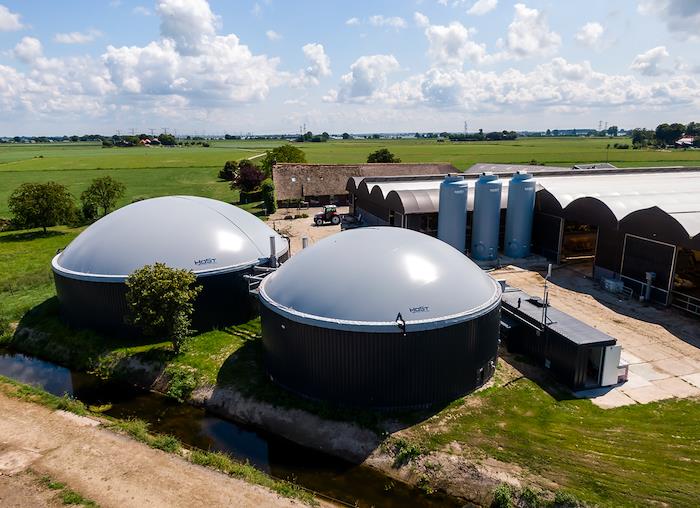In short
- Manure from farms can be fermented and thus converted into renewable energy
- HoSt creates sustainable biomass energy installations that convert manure into green gas
Global Goal

One of the ways to convert organic waste and biomass into biogas is fermentation. The fermentation of manure is increasingly seen as one of the most promising options for producing sustainable energy and, for processing manure into an end product. Sjaak Klein Gunnewiek, sales manager biogas projects: “We want to bring innovations, the market’s demand, market conditions and the production of sustainable energy together. Our sustainable biomass energy installations could be a solution for the ever-increasing waste problem.”
The driving force behind HoSt in the field of manure fermentation is very simple, explains Sjaak. “Enough gas for the needs of one household can be produced from the manure of only two cows. Less natural gas is required by capturing this methane gas, and it prevents greenhouse gasses from being released into the air. “Mono-manure fermentation is a proven and feasible innovation for the production of renewable energy and other valuable end products from manure. Fermenting manure from dairy cows at one’s farm is an investment that farmers can oversee, and it is financially attractive. Moreover, the farmer is no longer the problem due to greenhouse gas emissions such as CO2, methane and nitrogen. He is the solution.”

However, there is a big challenge in making the stable (floor) suitable. With manure fermentation, you need to transport the fresh manure immediately from the stable to the digester. This is done via pipes so that fresh manure with a high gas production is obtained. “We installed an installation at a dairy farmer in Deurningen where the manure is processed into a green gas with the quality of natural gas. A special feature of this project is that the stable floors have been sealed with low-emission rubber floors so that fresh manure with a high gas production is obtained. Also, ammonia and methane emissions due to traditional basement storage are reduced.” The high-quality green gas is directly supplied to the low-pressure network (LD network). The installation in Deurningen produces 40Nm3 (cubic metres) of green gas per hour, sufficient for heating a total of around 400 Dutch households.
The manure digester is basically a gas-tight, heated, insulated tank with a mixer in which the manure is anaerobically fermented and is converted into biogas under controlled conditions. Methane is not released and is used optimally. By applying advanced technology, the biogas is upgraded to green gas (biomethane) with the same characteristics as natural gas. This green gas is suitable for injection into the natural gas network. A very suitable and green alternative to heating, hot water and cooking with natural gas, a fossil fuel.
Related article(s)
Realising manure fermentation on a farm means that the digester must be fed daily with fresh manure. This process is fully automated, without the farmer having to worry about it. The challenge lies in making the stable and floor suitable for the fresh manure supply from the stable to the digester. For optimal fermentation and biogas production, fresh manure is a prerequisite; the gas yield is 30% higher compared to old manure. The calculation: a ton of fresh manure yields 35 Nm3 of biogas, whereas a ton of old manure produces 20 to 25 Nm3 of biogas. The efficiency of the Microferm green gas installation from HoSt is already optimal for dairy farms with manure production from 8,000 m³. Sjaak: “Fermentation, gasification and combustion of biomass and waste streams for energy production have a lot to offer, and we believe that they can serve a much larger market. Thanks to the technologies we are developing, HoSt can convert different waste streams into sustainable energy. HoSt has since become one of the largest and most important players in the field of bioenergy installations. We currently realise projects in Japan, the US and China.”
Date: 27 February 2020 |
Source of tekst: twente.com |
Author: twente.com





